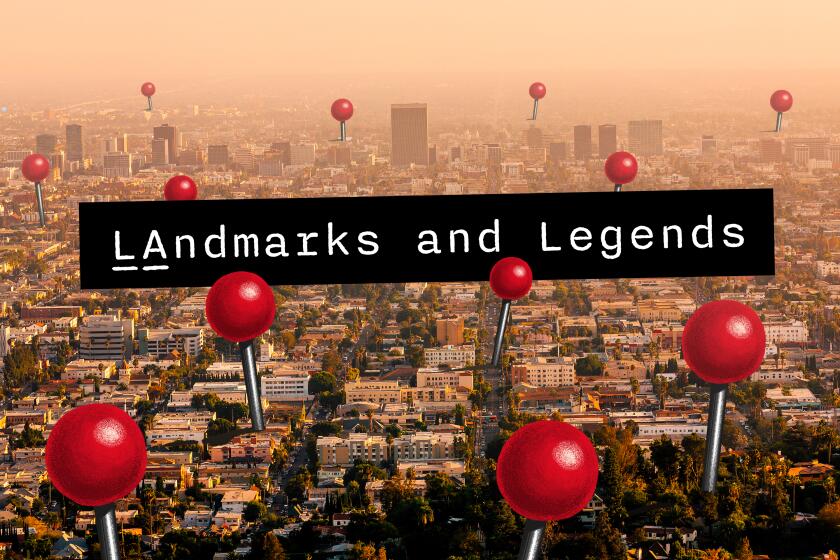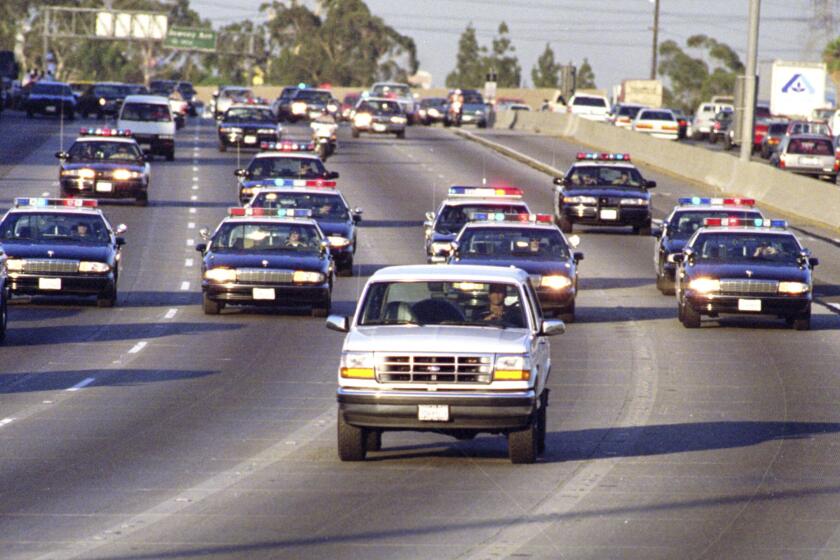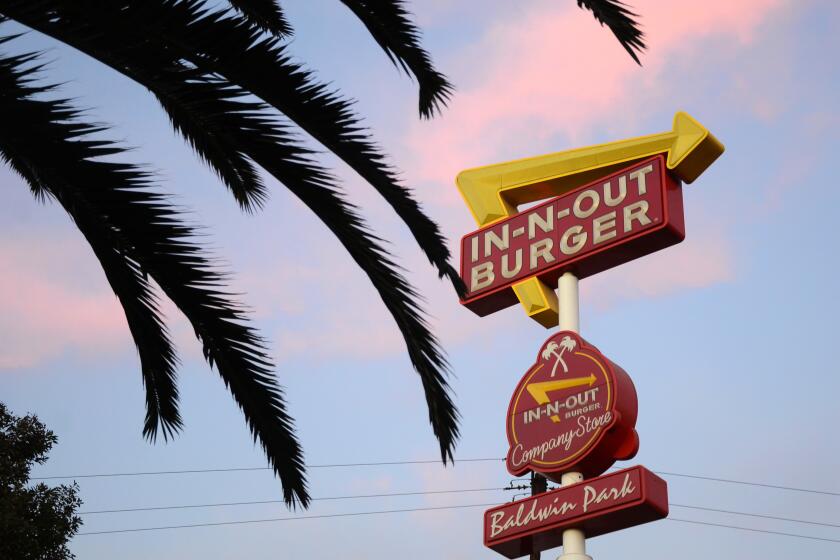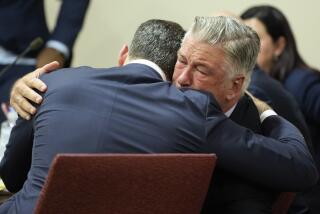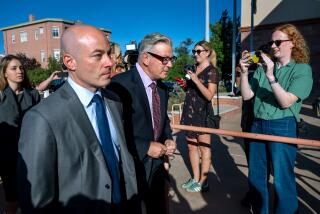Guns have been in motion pictures since the start. ‘Rust’ is only the latest to have a gun death
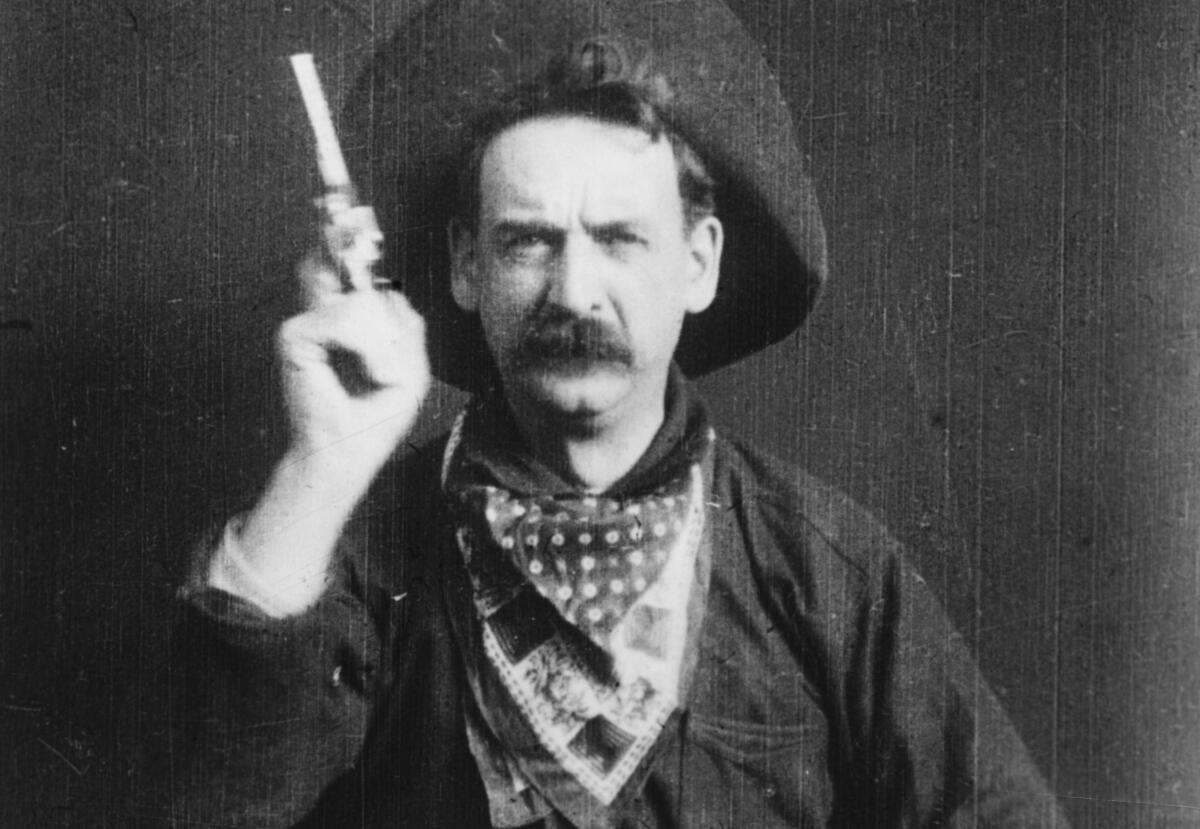
In 1893, the historian Frederick Jackson Turner argued with bittersweet persuasiveness that the American frontier was now closed, that its day was done.
Maybe the actual frontier was over, but its mythmaking machinery was just beginning.
The very next year, Thomas Edison made a 90-second film of “Little Miss Sure Shot,” Annie Oakley, performing some of her marksmanship. It may very well have been the first time that a gun was fired in a motion picture film.
The frontier legend could not have lasted without gunplay in the movies, which wasted no time weaponizing the old West and the new. In the final scene of “The Great Train Robbery,” the outlaw-actor fires his revolver directly at the camera, at the audience — not just six times, but insolently pulling the trigger even after the cylinder is empty.
Now we have the matter of the film “Rust.” The cinematographer, Halyna Hutchins, was killed when a supposedly “cold” gun in the hands of actor and producer Alec Baldwin went off. Baldwin and the film’s armorer face involuntary manslaughter charges. The film’s first assistant director, who handed the gun to Baldwin, arranged a plea deal for negligent use of a deadly weapon.
Movie-set gun accidents are aplenty, but the closest parallel of legal consequences for a film set death may be the 1982 “Twilight Zone: The Movie,” when a helicopter shooting a scene crashed and killed actor Vic Morrow and the two Vietnamese child performers who were working in violation of state laws. In the protracted civil and criminal proceedings, director John Landis and four other principals were acquitted of involuntary manslaughter, millions of dollars in settlements were made to the victims’ families, and Hollywood organizations laid down more rigid safety regulations.
Get the latest from Patt Morrison
Los Angeles is a complex place. Luckily, there's someone who can provide context, history and culture.
You may occasionally receive promotional content from the Los Angeles Times.
Movie- and television-making have accumulated a veritable emergency room’s worth of gun accidents. The best-known ones are the ones that happen to the actors.
Brandon Lee, son of martial arts icon Bruce Lee, died after being shot as he was filming “The Crow” in 1993. In 1984, actor Jon-Erik Hexum was appearing in an episode of a TV series called “Coverup.” He was off-camera during a break in filming when he picked up a gun that was reportedly empty save for one blank; that blank was in the chamber when Hexum held the gun to his own head and pulled the trigger, killing him. The force of the blank fractured the bone at his right temple.
In the decades when certain Hollywood forces and certain quarters of Los Angeles justice had uncommonly close relationships, the possibility tips into likelihood that some nasty incidents on and off set went overlooked or hushed up, papered over or paid off. And there must have been, certainly in the early years, a sense of “caveat actor”: Bad stuff can happen on a movie set, and that’s just the way of it.
The then-deputy L.A. police chief and future chief James Davis — who gloried in the nickname “Two-Gun Davis” — recommended markswoman Marion Semmelmeyer as the crack shot for a newsreel scene in 1933. She was a member of the state’s women’s pistol team.
Stuntman Hurd McClellan had strapped on a bulletproof vest and swung like a pendulum suspended from a tree bough as news accounts said Semmelmeyer shot him several times without mishap. McClellan had done this sort of exercise before, with police officers, and using the same vest.
The last time, though, he cried out, “It went through!” and collapsed.
He died in the hospital a few days later. Investigators concluded that the bullet made it past a weakened spot in the vest. “It was a defect in the vest and not in my shooting,” said Semmelmeyer, with an assurance that dared to be contradicted. An inquest agreed with her.
It turns out McClellan was being paid $5 to get shot, which The Times figured had worked out to about 12 cents per blast (the equivalent of about $2.75 today).
Who is Griffith Park named for? What about Vasquez Rocks? The Broad? Mt. Baldy? Here are the namesakes of L.A.’s best-known landmarks.
As director Cecil B. DeMille was making the 1915 film “The Captive,” an extra was shot dead because, DeMille wrote in his autobiography, “One of the players had neglected to make the change I had ordered from live ammunition to blank.… No one ever knew, officially, who had carelessly omitted to unload one of the rifles; but there was one of our soldiers who failed to appear for work at the studio again, whom no one ever saw again in Hollywood. The widow of the man who was killed was kept on the studio payroll for years.”
Five movie extras were shot and wounded in the spring of 1923 — not on the set of the 1923 Lon Chaney film “The Hunchback of Notre Dame,” where they’d been working, but outside a downtown casting office whose slick practices had already been investigated by The Times.
Hundreds of extras had been told they’d be paid $5 a day, but when they showed up to collect, they heard the pay was now $3, and if they didn’t accept it, they’d be blackballed. When they made their feelings known, the management called police to report that a bunch of “Wobblies” — members of the activist IWW union — were making trouble. Well, even the head of the police “Wobbly squad” — yes, the LAPD had one — said the crowd was no such thing.
In any case, a security guard blasted off six shots and wounded five people. Luckily for him, the police hauled him off to safety as the short-changed and shot-up crowd began to pull at the man and holler, “Lynch him!”
The papers gave days of coverage to a February 1927 off-screen shootout at Universal between two movie cowboys who had been enemies since their days on the trail in Texas before World War I.
Early stories painted George Emerson and George “Scotty” Wonderly facing off like gunslingers settling a grudge on a studio street.
Some writer of purple prose delivered this account in The Times: “The roar of two .45s crashed against the wooden [store]fronts and two jets of light cut the gloom of the storm. ... Emerson staggered, twisted slowly, and fell. Wonderly, his gun whirling into the mud and a bleeding gash in his right hand, reeled against a hitching rack in front of the Last Chance Saloon.”
In fact, Emerson was a lion trainer at the studio zoo, and Wonderly worked with animals there too. He said he only fired after Emerson tried to shoot him. The preliminary hearing was held, dramatically, at Emerson’s bedside at Queen of Angels hospital. He testified that the two had argued over the mundane matter of who would put a mat under an elephant when Wonderly got a .45 from the trainers’ quarters and “came running toward me. Then I felt a thump against my heart and I passed out.” Wonderly pleaded guilty, and Emerson besought “compensation under state law.”
The passive voice was expertly employed in 1939, for an incident in the making of “Hotel Imperial,” a World War I-themed Paramount movie shot on the eve of World War II. Stuntman Jack Woody, the ex-husband of popular actress Helen Twelvetrees, got shot in the cheek by a blank in a scene where he wrestled with an actor’s double. “A revolver was discharged,” wrote The Times laconically. (The film’s star, Actor Ray Milland, was hospitalized for a fortnight after he was thrown from his horse.) Two years earlier, Woody had been hit in the neck by a ricochet while making “Thank You, Mr. Moto.” In both instances, he returned matter-of-factly to work.
And of course it was news in 1933 when Andy Devine, the comic-sidekick actor with the voice like an unoiled hinge, was off work for a few days after a gun accident: He dropped a .45 on his right foot while making a movie for Universal Studios and broke a toe.
For about as long as L.A. has had roads, we’ve had cops chasing speeding cars. Now they are live TV spectacles, sometimes ending in broadcast tragedy.
The tourists and passersby who thronged the corner of Sunset and Gower on a February day in 1940 understandably thought they were watching a movie shootout scene on “Gower Gulch” near Columbia Pictures.
One movie cowboy chased down another who’d been threatening him for years, and shot him to death in a parking lot. (Move that forward 75 years, and imagine the YouTube views.)
Jerome “Blackjack” Ward reenacted it all for the cops in the jailhouse. John Tyke had just gotten out of jail — again — and “he was pesterin’ me and wantin’ to fight.” Tyke swore to beat Ward to death or cut out his heart with his knife. Outside the drugstore at Sunset and Gower, Tyke followed Ward and “called me ‘yellow’ and other dirty names.”
Ward went to his car and picked up his “picture work” gun and said he started to drive off to a gig at another studio. Tyke stepped in front of his car, and Ward shot him through the windshield. Tyke took off running, and Ward went after him, still shooting.
Tyke fell, and Ward “poured bullets into his body.” A fellow named Yukon Jake — who was of course a wrestler and character actor himself — heard the zing of bullets and realized, “This is no picture. This is real.” He threw a wristlock on Ward, who managed to wrench free and drive off before he was cornered by the cops not far away.
When no weapon turned up on Tyke, things looked bad for Ward, but what got him off on self-defense was another moment straight out of the movies.
As the Reno Gazette reported, Yukon Jake came into court with a pearl-handled knife that another witness said he recognized as Tyke’s. Yukon Jake had, the day after the shooting, taken his Doberman for a walk around the crime scene and the dog sniffed out the knife. “I didn’t think nothing of it at the time and stuck it in my pocket and tossed it in with my fishing tackle,” recounted Yukon Jake, until the matter came to court.
There was solidarity among cowboy actors. A news photo showed a crowd of them showing up in their 10-gallon hats calling out, “We’re with ya, pard” to Ward. The Waterloo, Iowa, Daily Courier wrote that the Gower Gulch cowboys put out a statement about how menacing Tyke had been for years. “He was always working himself out of jobs because he was so mean. ... He has forced his way into our homes and forced us to feed him and made a practice of slapping us around on the street. Somebody had to do something about it, and it turned out to be Ward. ... Blackjack is a tough old cowboy, but we’re all for him.”
McDonald’s, In-N-Out, Carl’s Jr., Taco Bell, Del Taco, Der Wienerschnitzel ... you name the fast-food joint, it probably started here.
All those bystanders thought they were watching Ward and Tyke acting in a movie. But Erlina Ardoin didn’t recognize a movie scene when she saw one.
In 1974 she was driving by a bank at the intersection of Washington Boulevard and 4th Street at the moment when actors staging a bank robbery for the movie “Darktown Strutters” came bursting out of the doors firing machine guns.
Ardoin, who had moved here from Texas not long before, thought she was seeing a real bank heist. She dived down below her dashboard and her car went out of control. It hit three other cars and nine people, most of them there to watch the movie shoot. Three years later, the case was settled with payouts by the film company.
In the spring of 1971, only about three dozen people were on hand for a dress rehearsal of an amateur production of “Oliver!” at Bakersfield College’s desert campus. One of the stars was Wayne Carpenter. He was a physicist at the China Lake Naval Weapons Center, and was playing the villainous Bill Sikes.
In the climactic scene, the killer Sikes is trying to escape over London’s rooftops when a policeman shoots him twice. Carpenter fell to the stage floor and the rehearsal went on. Not until Carpenter moaned did everyone realize he had been shot in the chest. The Marine playing the police officer had been using his own gun with homemade blanks. Authorities said a fragment of bullet left behind in one of the blanks had been enough to kill Carpenter.
Here’s an only-in-the-movies finale:
In Charles Dickens’ 1838 novel “Oliver Twist,” Sikes climbed onto a roof and looped a rope noose around his torso to lower himself to safety. When he imagines he sees the staring eyes of the lover he just murdered, he slips and hangs himself — a fine bit of Victorian crime and punishment.
Only in the movie script versions a hundred-plus years afterwards — including the musical “Oliver!” — is Sikes killed by another man’s hand. By a gun.
Explaining L.A. With Patt Morrison
Los Angeles is a complex place. In this weekly feature, Patt Morrison is explaining how it works, its history and its culture.
More to Read
Sign up for Essential California
The most important California stories and recommendations in your inbox every morning.
You may occasionally receive promotional content from the Los Angeles Times.
